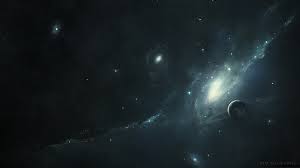[NOVA SpaceNow] DARK MATTER: Space PBS Documentary 2015 HD

Entry description:
Published on Mar 30, 2015
[NOVA SpaceNow] DARK MATTER: Space PBS Documentary updat 2015 HD
Dark matter is a hypothetical kind of matter that cannot be seen with telescopes but accounts for most of the matter in the universe. The existence and properties of dark matter are inferred from its gravitational effects on visible matter, radiation, and the large-scale structure of the universe. It has not been detected directly, making it one of the greatest mysteries in modern astrophysics.
Dark matter neither emits nor absorbs light or any other electromagnetic radiation at any significant level. According to the Planck mission team, and based on the standard model of cosmology, the total mass–energy of the known universe contains 4.9% ordinary matter, 26.8% dark matter and 68.3% dark energy.[2][3] Thus, dark matter is estimated to constitute 84.5% of the total matter in the universe, while dark energy plus dark matter constitute 95.1% of the total mass–energy content of the universe.[4][5]
Astrophysicists hypothesized dark matter because of discrepancies between the mass of large astronomical objects determined from their gravitational effects and the mass calculated from the observable matter (stars, gas, and dust) that they can be seen to contain. Dark matter was postulated by Jan Oort in 1932, albeit based upon flawed or inadequate evidence, to account for the orbital velocities of stars in the Milky Way and by Fritz Zwicky in 1933 to account for evidence of "missing mass" in the orbital velocities of galaxies in clusters. Adequate evidence from galaxy rotation curves was discovered by Horace W. Babcock in 1939, but was not attributed to dark matter. The first to postulate dark matter based upon robust evidence was Vera Rubin in the 1960s–1970s, using galaxy rotation curves.[6][7] Subsequently many other observations have indicated the presence of dark matter in the universe, including gravitational lensing of background objects by galaxy clusters such as the Bullet Cluster, the temperature distribution of hot gas in galaxies and clusters of galaxies and, more recently, the pattern of anisotropies in the cosmic microwave background. According to consensus among cosmologists, dark matter is composed primarily of a not yet characterized type of subatomic particle.[8][9] The search for this particle, by a variety of means, is one of the major efforts in particle physics today.[10]
Although the existence of dark matter is generally accepted by the mainstream scientific community, some alternative theories of gravity have been proposed, such as MOND and TeVeS, which try to account for the anomalous observations without requiring additional matter.
Language: Русский









